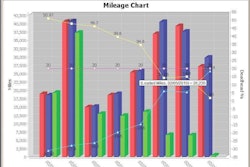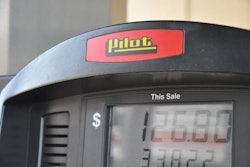All companies that supply technology to commercial and private fleets share one thing in common. To meet the increasingly complex needs of customers they have to integrate with a variety of external platforms.
Apple and Android are the standard for what open platforms and integration look like, at least for mobile technology. Smartphones and tablet devices come with unlimited access to software apps with built-in features to share information with social networks and other cloud-based applications.
By comparison, technology in the transportation industry has taken longer to adapt to consumer trends. Business or “enterprise” applications have to be very robust and reliable. This requirement traditionally has limited platform options for hardware, software and data integration with external systems.
This is no longer the case. Open platforms are now a competitive necessity. Fleets expect vendors to provide more options, flexibility and choices to latch onto new technology advancements.
As an example, Saia is now using iPads and Android devices to improve its vehicle maintenance. Until last January, the Johns Creek, Ga.-based carrier was using paper forms for inspections and to capture repair work. The data was keystroked into its maintenance software system. Communication with its dealers and vendors was manual.
“Logistically there was a lot of paperwork that followed repairs we had just completed,” says Jason Plumlee, director of maintenance for the less-than-truckload carrier and logistics provider.
Saia now uses a cloud-based communications platform from Decisiv to manage all its maintenance service events, both inside and outside of its facilities. The Decisiv platform automates the flow of information between its own systems and those of its maintenance service providers.
As of January, 2013, technicians that inspect or repair Saia vehicles scan a QR code attached to the asset using Apple or Android devices. A QR code is a matrix bar code designed to retrieve information rapidly when scanned by a tablet or other mobile device.
A scan enters the VIN number from the QR code into the Decisiv platform. Instantly, the technician sees the type of inspection or preventive maintenance (PM) service due along with other relevant information such as mileage and active recalls or warranty issues. Decisiv captures this through integration with Saia’s maintenance software and the external systems used by its dealers and vendors.
Technicians complete inspections using the mobile device and Decisiv application. With the cloud-based platform, Plumlee and other managers have instant visibility to the status of maintenance events and work productivity.
“We also see the exceptions — the things that (a technician) is finding wrong that have failed. Those items, or tasks, are pushed to our business system to create repair orders,” Plumlee says.
With the platform Saia communicates electronically with its vendors to initiate repairs, access service histories, approve and monitor repair statuses and manage repair expenses online. When outside technicians scan QR codes they immediately know what services have been approved by Saia and for what cost.












